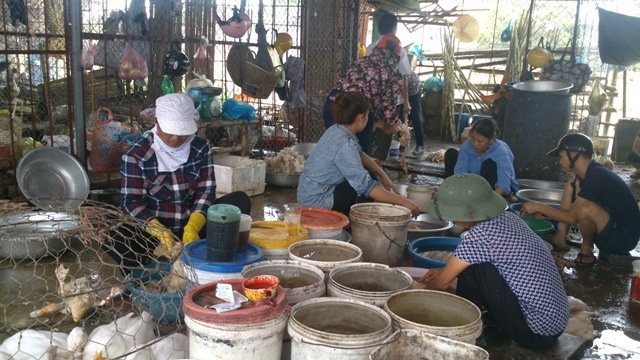 Society
Society

Thousands of slaughter houses in central province of Thanh Hóa are operating without licences and failing to meet hygiene, food safety requirements.
 |
| Thousands of slaughterhouses in the central province of Thanh Hóa are operating without licences and failing to meet hygiene and food safety requirements, the province’s Animal Health Division has announced. — Photo dantri.com.vn |
THANH HÓA — Thousands of slaughterhouses in the central province of Thanh Hóa are operating without licences and failing to meet hygiene and food safety requirements, the province’s Animal Health Division has announced.
According to the division, more than 80 per cent of the province’s 2,473 slaughterhouses are substandard, failing to meet hygiene and food safety requirement and lacking waste collection and treatment systems.
The substandard slaughterhouses, mostly in households, process more than 90 per cent of cattle and poultry in the province.
Deputy head of the Animal Health Division Lê Văn Sơn said that in 2013, there were over 2,800 small-sized slaughterhouses in the province. Most of them were unlicensed.
In September 2013, the province People’s Committee approved a plan worth VNĐ974 billion (US$42.84 million) to develop 100 industrial slaughterhouses in the province by 2020 to replace the substandard ones.
However, in the last four years, only 400 substandard facilities were removed.
Meanwhile, eight industrial slaughterhouses have been completed since 2003, when the province called on investors to develop slaughterhouse projects.
However, half of the industrial slaughterhouses halted operation, and the remaining ones lack clients.
Vũ Tiến Ngần, an owner of an industrial slaughterhouse in Sầm Sơn City, said that in 2003, he spent VNĐ1.1 billion ($48,400) to build a 2,000sq.m slaughterhouse which can deal with 50-70 pigs daily.
His slaughterhouse starting operation in middle 2014 received only 30-40 pigs per day in about six months and then, he had fewer and fewer clients, Ngần said.
“The slaughter was unused for years until 2013 when local agencies encouraged me to re-start the slaughterhouse, saying that they would call on more engagement from local farms,” Ngần said.
However, he said that he hardly saw changes.
The slaughterhouse of Thanh Hóa Farming Product Ltd Company which was invested over VNĐ6 billion ($264,000) but also unused for years, causing losses especially it was equipped with boiler, drying system and a shelter for about 300-400 heads of cattle.
Sơn said that household-based slaughterhouses should be banned, and their unquarantined products should be restricted from sale on market.
If so, farmers would take their cattle/poultry to industrial standard slaughterhouses, he said, but local agencies have so far failed to deliver sufficiently strict actions. — VNS




